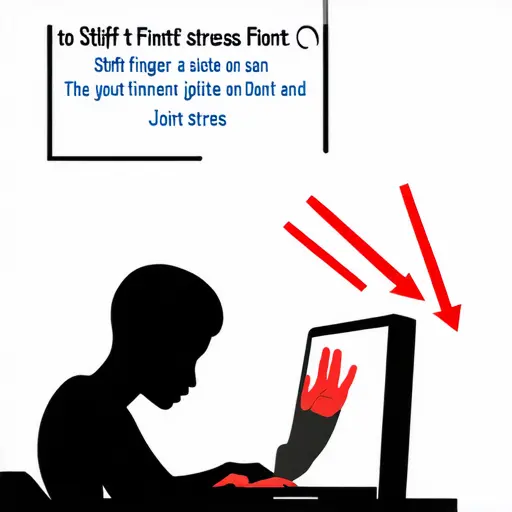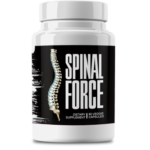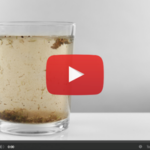This Village-Made Chinese Pain Reliever Eliminates Back And Joint Pain!
Prevent Pain by Understanding the Cause of Osteoarthritis

Introduction: What Really Causes Osteoarthritis—And How to Stop It Early
If you've ever winced while climbing stairs or felt your knees lock up after sitting too long, you're not alone. Osteoarthritis (OA) sneaks up on millions, turning simple movements into painful challenges. But here's the good news: understanding the real cause of osteoarthritis gives you the power to fight back. Let's cut through the confusion and explore what's actually happening inside your joints—plus practical ways to protect them before damage sets in.
Osteoarthritis Explained: Your Joints' Worst Enemy
Think of cartilage as your joints' shock absorbers—the smooth padding that keeps bones from grinding together. Osteoarthritis is what happens when that cushion wears down over time. Unlike rheumatoid arthritis (where the immune system attacks joints), OA is more like a slow-motion car crash of everyday use. The result? Morning stiffness that lingers, joints that crackle like bubble wrap, and pain that seems to have a mind of its own—especially in knees, hips, fingers, and spines.
Why Playing Detective With Your Joint Health Matters
Ever wish you could turn back time for your joints? While we can't change some risk factors (thanks, genetics!), cracking the code on the cause of osteoarthritis reveals surprising control you do have. It's like finding hidden cheat codes for joint health—small changes today can mean the difference between needing a knee replacement at 60 or hiking at 70.
Is Your Body Secretly Brewing Osteoarthritis? Check These Risk Factors
- The birthday effect: After 50, your joints start acting like an old mattress—less spring, more sag.
- Old injuries haunting you: That high school soccer injury? It might be writing checks your joints are still cashing.
- Family reunion red flags: If Grandma and Mom needed joint replacements, your genes might be stacking the deck against you.
- The weight-joint connection: Every extra pound feels like four to your knees—it's basic physics meets biology.
The Root Causes of Osteoarthritis: It's More Than Just "Getting Older"
OA doesn't play fair—it's a tag-team of factors working against your joints. Here's what's really going on under the surface:
Time's Toll: Why Age Isn't Just a Number for Joints
Cartilage is like the tread on your car tires—it wears down with miles. By retirement age, about half of us show OA signs on X-rays. But here's the kicker: some 80-year-olds have joints like 50-year-olds, while some 50-year-olds move like they're 80. The difference? How you've treated your joints along the way.
Family Ties: When Your Genes Betray Your Joints
Ever noticed OA seems to run in families? Blame your DNA. Scientists have pinpointed genes (like GDF5) that act like faulty blueprints for cartilage repair. If your relatives' joints failed early, consider this your heads-up to start preventative care now.
Old Injuries That Won't Stay in the Past
Remember that time you blew out your ACL in college? Your joint remembers too. Trauma—whether from sports injuries, car accidents, or repetitive work motions—leaves behind microscopic damage that snowballs into OA years later. The silver lining? Proper rehab can significantly slow this process.
Silent Contributors: Surprising Factors Making Osteoarthritis Worse
These under-the-radar issues are like pouring gasoline on your joint health fire:
The Heavy Truth About Weight and Joints
Here's a scary equation: 10 extra pounds = 40 pounds of pressure on your knees with every step. But it's not just mechanics—fat cells pump out inflammation chemicals that literally dissolve cartilage over time.
Use It or Lose It: The Exercise Paradox
Weak muscles are like slack suspension on a car—all the bumps go straight to the joints. But here's the twist: gentle, regular movement (think swimming or cycling) actually nourishes cartilage. It's the Goldilocks principle—not too little, not too much.
When Your Job or Hobby Is a Joint's Nightmare
Construction workers kneeling all day, marathon runners logging miles, even knitters constantly bending fingers—repetition wears joints down in predictable patterns. The fix? Smart modifications before pain starts.
Your Body's Hidden Design Flaws That Invite Osteoarthritis
Born This Way: Joint Shapes That Spell Trouble
Some people's hips or knees come pre-loaded with alignment issues (like hip dysplasia). It's like driving a car with wheels out of balance—everything wears out faster.
Posture Problems You Can Actually Fix
That slouch or uneven walk isn't just an aesthetic issue—it's redistributing joint forces in ways Mother Nature never intended. Often, simple fixes like orthotics or posture training can reset the clock.
The Inflammation Connection: Osteoarthritis's Secret Accelerator
New research reveals OA isn't just mechanical—it's got a biochemical component too.
Foods That Fight (or Fuel) Joint Inflammation
- Joint enemies: Sugar (the sticky kind that gums up joint fluid), processed meats (loaded with inflammatory compounds), and fried foods (oxidation city).
- Joint heroes: Salmon (nature's anti-inflammatory), spinach (packed with joint-protecting antioxidants), and cherries (shown to lower OA pain in studies).
Can You Actually Prevent Osteoarthritis? (Spoiler: Yes!)
The best time to prevent OA was 20 years ago. The second-best time? Today. Try these science-backed moves:
- Drop excess weight—even 10 pounds makes a measurable difference.
- Strength train like your joints depend on it (because they do).
- Learn proper movement patterns—how you lift, squat, and bend matters more than you think.
Busting Osteoarthritis Myths That Could Be Hurting You
"Only Grandma Gets Arthritis"—And Other Dangerous Lies
Tell that to the 30-year-old former athlete needing knee surgery. While age increases risk, OA doesn't check IDs—it goes after vulnerable joints regardless of birth year.
Your Joint Health Action Plan Starts Today
Now that you understand the real cause of osteoarthritis, you've got something priceless: options. Whether it's swapping soda for green tea, taking the stairs instead of the elevator, or finally seeing a physical therapist about that old knee injury—every smart choice adds cushion to your joint future. Your 70-year-old self will thank you.








